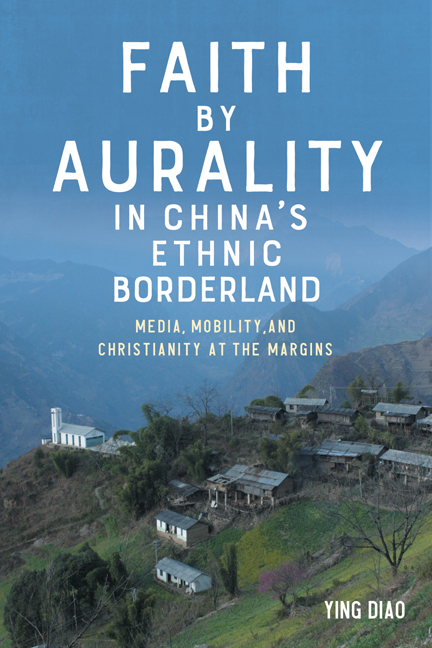Book contents
- Frontmatter
- Dedication
- Contents
- Acknowledgments
- Notes on Romanization and Terminology
- Introduction
- 1 Becoming the Faithful: Cleanliness and Conversion
- 2 Hearing the Return of Faith: Radio and Listening Audience
- 3 Producing Gospel Songs: Studio and Media Practitioners
- 4 Faces and Places: Sounds That Recognize
- 5 Traces of Faith: Sound Artifacts and Infrastructures
- 6 Performing Recorded Songs: Religiosity by Body
- 7 Hidden Faith: Sanitizing the Voice
- Conclusion: Faith on the New Frontier
- Appendix 1 Glossary of Old Lisu
- Appendix 2 Glossary of Chinese Characters
- References
- Index
1 - Becoming the Faithful: Cleanliness and Conversion
Published online by Cambridge University Press: 15 May 2024
- Frontmatter
- Dedication
- Contents
- Acknowledgments
- Notes on Romanization and Terminology
- Introduction
- 1 Becoming the Faithful: Cleanliness and Conversion
- 2 Hearing the Return of Faith: Radio and Listening Audience
- 3 Producing Gospel Songs: Studio and Media Practitioners
- 4 Faces and Places: Sounds That Recognize
- 5 Traces of Faith: Sound Artifacts and Infrastructures
- 6 Performing Recorded Songs: Religiosity by Body
- 7 Hidden Faith: Sanitizing the Voice
- Conclusion: Faith on the New Frontier
- Appendix 1 Glossary of Old Lisu
- Appendix 2 Glossary of Chinese Characters
- References
- Index
Summary
[James O.] Fraser gathered them [the Lisu] together and explained more fully what it meant to “turn to God from idols.” He had learned that anything short of the complete destruction of all implements used in spirit worship did not count as making room for Christ in heart and home. That was the dividing line; once it was crossed, faith could take possession in a real way. Families had to destroy all traces of demon worship, even pulling down the spirit shelf in the little shrine perched above them on the mountainside.
—Taylor [1964] 1975, 193The value of proper feeding, sleeping hours, fresh air and cleanliness were pointed out, every single one of those items being an entirely new idea to them [Lisu] … During these talks together Ma-ma definitely aimed at what St. Paul termed “the transformation of your minds” and the casting out of heathen thoughts and attitudes often unconsciously retained.1
—I. Kuhn 1951, 77Conversion does not seem to be a most obvious place to start the investigation of Lisu Christian striving by aurality. I could have begun with something more relevant to vocal cultivation and hearing—for instance, the practice of radio circuit listening discussed in chapter 2. And yet, I begin with conversion—a seemingly ineffable experience of deliberately working to change one's faith—because it is more than just one among many milestones in the history of Lisu Christianity. I am interested in conversion particularly for the ways it illuminates some central concerns of this book about Christian striving and belonging in terms of materiality, mobility, and (re)mediation. From this perspective, the study of Lisu conversion can be most useful by placing at the center of examination—rather than the cause or consequence of conversion—the kind of qualitative experience one undergoes in order to mold oneself into “an ideal Christian” in terms of broader semiotic ideologies about faith and conversion (Keane 2003).
Missionary records from the early twentieth century show that Protestant missionaries working among the Lisu generally understood conversion as both a one-time turning point and a continuous process of (re)confirmation.
- Type
- Chapter
- Information
- Faith by Aurality in China's Ethnic BorderlandMedia, Mobility, and Christianity at the Margins, pp. 24 - 49Publisher: Boydell & BrewerPrint publication year: 2023

